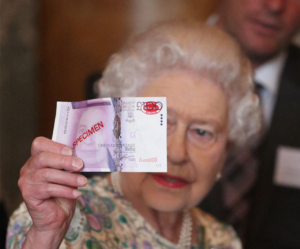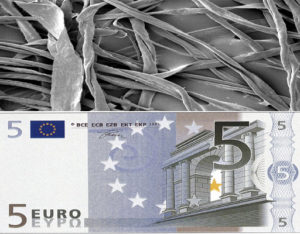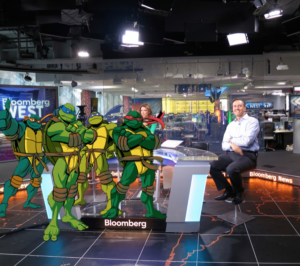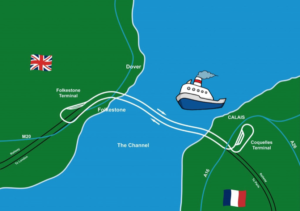Can you name which currency pairs traders call “Barnie and Betty”? Yes, those from the Flintstones. If you can, well done! If not, don’t worry – the world of forex is filled with colorful slang, amusing nicknames, and insider language that makes the markets feel almost like a secret club.
Professional traders, financial journalists at Bloomberg and CNBC, and seasoned investors all use these nicknames daily. They’re not just fun – they actually make communication faster and help you think like a pro.
This guide will teach you every major currency nickname you need to know, where they came from, and why traders still use them today.
Table of Contents
Complete List of Currency Nicknames Used by Pro Forex Traders
Here’s the master list of nicknames for the most popular currencies and pairs. These are used daily by professional forex traders and major media outlets like Bloomberg, CNBC, Investopedia, and the Financial Times.
Individual Currencies:
- USD (U.S. Dollar) – Greenback or Buck
- GBP (British Pound) – Sterling or Cable (when paired with USD)
- EUR (Euro) – Fiber
- CHF (Swiss Franc) – Swissy
- CAD (Canadian Dollar) – Loonie
- AUD (Australian Dollar) – Aussie
- NZD (New Zealand Dollar) – Kiwi
- NOK (Norwegian Krone) – Noki
- SEK (Swedish Krona) – Stocky
- JPY (Japanese Yen) – Yen (no common nickname alone)
Currency Pairs:
- EUR/GBP – Chunnel
- EUR/JPY – Euppy or Yuppy
- EUR/USD – Fiber (same as Euro alone)
- GBP/USD – Cable
- GBP/JPY – Gopher or Geppy
- USD/JPY – Ninja or Gopher
- USD/RUB – Barney
- EUR/RUB – Betty
- EUR/BTC – Nakamoto (less common, emerging)
These aren’t official terms – they evolved organically on trading floors, in dealing rooms, and through decades of market culture. Once you start using them, you’ll find they stick in your memory much faster than dry currency codes.
How Many Currencies Are in the World?
There are 180 currencies recognized globally by the United Nations. But in forex trading, only about 8-10 of them make up the vast majority of daily volume. The U.S. Dollar dominates as the world’s reserve currency, involved in nearly 88% of all forex transactions.
In terms of history, the British Pound is the oldest currency still in use today, with over 1,200 years of history. On the opposite end, the South Sudanese Pound is the newest, made official on July 18, 2011, when South Sudan gained independence.
Not all currencies are equally “tradable.” Many emerging market currencies have low liquidity, wide spreads, or restrictions that make them impractical for retail traders. That’s why the major pairs – the ones with nicknames – are where most of the action happens.
If you’re curious about diving into the real world of currency trading yourself, whether as a complete beginner or an experienced hand, you can practice risk-free with an interactive trading simulator. It’s one of the smartest ways to learn without losing actual money while you figure out what works.
Interactive Quiz: Test Your Currency Nickname Knowledge
Let’s see how well you know your forex slang. Try this quick quiz – answers revealed at the bottom!
Secret Currency Nicknames Quiz
B) Cable
C) Chunnel
D) Sterling
B) NZD
C) CAD
D) USD
B) Ninja
C) Samurai
D) Gopher
B) Barney and Betty (Flintstones)
C) Mickey and Minnie
D) Fred and Wilma
B) Reference to the cotton-polymer fiber in banknotes
C) Named after a European trader
D) It has no real meaning
1. B) Cable | 2. C) CAD | 3. B) Ninja | 4. B) Barney and Betty | 5. B) Reference to the cotton-polymer fiber in banknotes
How many did you get right? 5/5 = Expert | 3-4 = Pretty good | 1-2 = Keep reading!
The Stories Behind the Currency Nicknames
USD – Buck & Greenback: From Deerskins to Dollars
The U.S. Dollar has two main nicknames, and both have surprisingly old roots. “Buck” comes from the frontier days when hunters and traders used buckskins – the hide of a male deer (a buck) – as a unit of exchange. Before paper money was widespread, deerskins had real value, and the name stuck even after currency moved to coins and bills.
“Greenback” appeared during the American Civil War in the 1860s. Both the Union and Confederate sides printed their own money, but the Union’s paper notes had a distinctive green ink on the back. People started calling them “greenbacks” to distinguish them from other forms of currency, and the name has lasted over 160 years.
When you hear a Bloomberg anchor say “the buck rallied today,” they simply mean the U.S. Dollar gained strength against other currencies. It’s shorthand that every trader recognizes instantly.
GBP – Sterling: The Metal That Built an Empire
The British Pound is officially called Pound Sterling, and that “Sterling” part refers to the silver standard the currency was originally based on. The word comes from “Easterling Silver,” a high-quality alloy used in medieval England. Over time, “Easterling” was shortened to “Sterling,” and the name stuck.
When financial news says “Sterling stumbled,” it means the Pound dropped in value – often triggered by political uncertainty, economic data, or events like major policy shifts. The currency has been around for over 1,200 years, making it the oldest continuously used currency in the world.
EUR – Fiber: The Modern Currency with a High-Tech Nickname
The Euro earned the nickname “Fiber” as a reference to the advanced cotton-polymer fiber blend used in Euro banknotes. Unlike older paper currencies, Euro notes are made with synthetic fibers that make them more durable and harder to counterfeit.
Some traders also see “Fiber” as a contrast to the old “Cable” (GBP/USD), representing the Euro as the newer, more technologically advanced currency of Europe. Either way, the name stuck, and you’ll hear it constantly on trading floors and financial news channels.
CAD – Loonie: The Bird That Became a National Symbol
In 1987, Canada introduced a new one-dollar coin featuring the common loon, a bird native to Canadian lakes and wilderness. The coin was immediately nicknamed the “Loonie,” and the name quickly extended to the currency itself.
Canadians embraced the nickname so completely that even the government and central bank use it in official communications. If you hear “the Loonie strengthened today,” it means the Canadian Dollar went up in value – often driven by oil prices, since Canada is a major energy exporter.
NZD – Kiwi: The Flightless Bird That Flies on Forex Charts
Half a world away, New Zealand uses the Kiwi bird – a small, flightless bird found nowhere else on Earth – as both a national symbol and a currency nickname. The New Zealand Dollar is universally called the “Kiwi” in forex markets.
When traders say “the Kiwi slipped,” they mean the NZD declined in value. New Zealand’s economy is heavily tied to agriculture and dairy exports, so the Kiwi often moves in tandem with global commodity prices.
USD/JPY – Ninja: The Silent Mover of Asian Markets
The Japanese Yen is unique because it trades at a much higher denomination than most other currencies. One U.S. Dollar equals roughly 140-150 Yen (as of 2025), which makes the math feel a bit different for new traders.
The USD/JPY pair is nicknamed the “Ninja” – partly because of Japan’s cultural association with ninjas, and partly because the pair can move suddenly and quietly during Asian trading hours. Some traders joke they also considered “Sumo,” but Ninja stuck.
This is one of the most liquid currency pairs in the world, and it’s heavily influenced by the Bank of Japan’s monetary policy and risk sentiment in global markets.
EUR/GBP – Chunnel: When Two Economies Meet Underground
The EUR/GBP pair is called the “Chunnel,” named after the Channel Tunnel that connects the UK and France beneath the English Channel. The tunnel opened in 1994, and the Euro launched just a few years later in 1999, so the nickname felt natural.
This pair represents the economic relationship between the Eurozone and the United Kingdom – a relationship that became much more interesting (and volatile) after Brexit. Traders watch this pair closely during any UK-EU negotiations or economic data releases.
AUD/USD – Aussie: The Commodity Currency Down Under
Australians love shortening words, and the AUD/USD pair is no exception – traders simply call it the “Aussie.” Australia exports massive amounts of iron ore, coal, natural gas, and other raw materials, making the Aussie a commodity currency.
When commodity prices rise (especially metals and energy), the Aussie often strengthens. When China’s economy slows (China is Australia’s biggest trading partner), the Aussie typically weakens. This makes AUD/USD one of the more predictable pairs if you follow global commodity markets.
Currency trading can seem overwhelming at first, but these nicknames actually make it easier to learn and remember. Once you start thinking in terms of “Cable rallied” or “the Kiwi dropped,” the markets start to feel less abstract and more like a conversation between real forces.
Frequently Asked Questions About Currency Nicknames
What is the most commonly used currency nickname?
The most common is probably “Cable” for GBP/USD, followed closely by “Fiber” for EUR/USD. Both are used daily by professional traders and financial media worldwide.
Do all currency pairs have nicknames?
No. Only the most heavily traded pairs have widely recognized nicknames. Exotic pairs like USD/TRY (Turkish Lira) or EUR/PLN (Polish Zloty) don’t have established slang terms because they’re traded far less frequently.
Why do traders use nicknames instead of currency codes?
Speed and clarity. On a busy trading floor, saying “Cable’s up” is faster than “GBP/USD is rising.” Nicknames also create a shared language that helps traders feel part of a professional community.
Are these nicknames used globally or just in English-speaking markets?
They originated in English-speaking trading centers like London and New York, but they’ve spread globally. Non-English traders often learn these terms because English is the dominant language in international finance.
Can using currency nicknames help me become a better trader?
Not directly – your success depends on analysis, risk management, and discipline. But knowing the slang helps you understand market commentary faster and makes you sound more professional when discussing trades. It’s part of thinking like a trader.
What’s the difference between “Sterling” and “Cable”?
“Sterling” refers to the British Pound itself (GBP), while “Cable” specifically means the GBP/USD currency pair. You might hear “Sterling strengthened against the Euro,” but if someone says “Cable dropped,” they mean GBP/USD specifically.
Why is the USD/JPY called “Ninja” and not something else?
The nickname plays on Japan’s cultural imagery, but honestly, it’s somewhat arbitrary. Traders tried out several names, and “Ninja” stuck because it sounded cool and was easy to remember. There’s no official reason – it’s just market culture.
Do central banks or official institutions use these nicknames?
Rarely in formal communication, but yes in casual settings. You won’t see “Cable” in a Bank of England policy statement, but traders who work at central banks absolutely use these terms when talking amongst themselves.
Want to Start Trading Forex?
If this guide sparked your curiosity about currency trading, you’re not alone. Forex is the largest financial market in the world, with over $7 trillion traded every day. Whether you’re just starting or looking to refine your skills, having the right foundation makes all the difference.

Free Forex Trading Guide for Beginners
Learn everything from currency pairs and pips to risk management and trading strategies. This comprehensive PDF covers what took most traders years to figure out – and it’s completely free.
✓ No email required
✓ Instant download
✓ Beginner-friendly explanations
Currency nicknames might seem like a small detail, but they’re part of what makes forex trading feel like a real craft. The more you immerse yourself in the language, the faster you’ll start thinking like a professional trader – and that shift in mindset matters more than most beginners realize.








